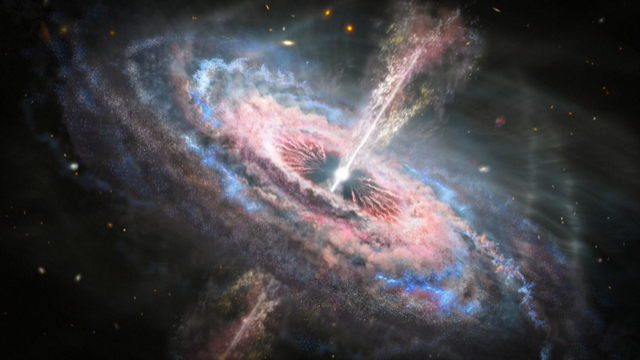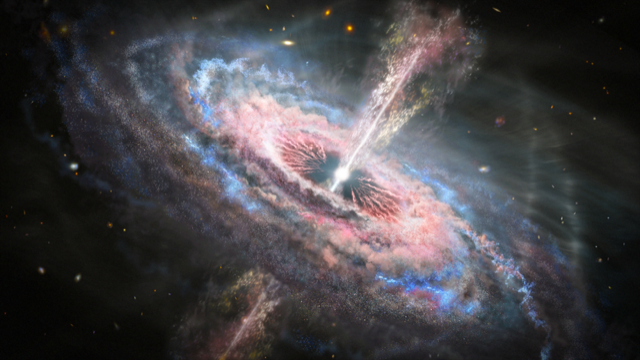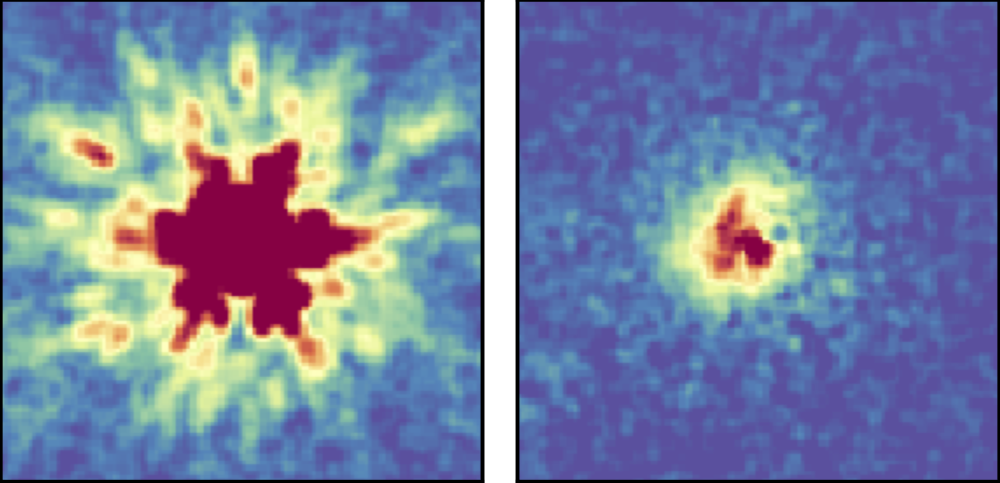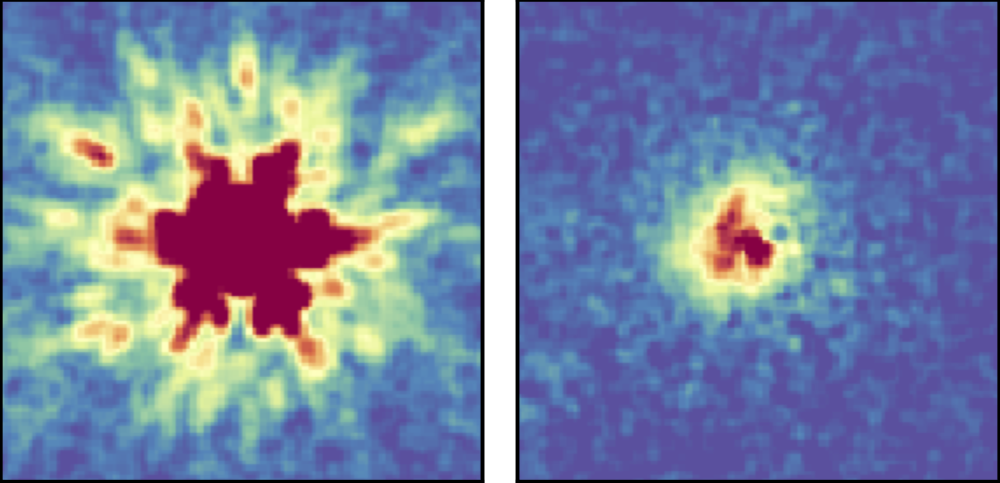Sneak Preview of Early Quasar Observations
The centers of galaxies often house supermassive black holes, whose masses are equivalent to millions of Suns or more. For some galaxies, the central supermassive black hole energizes the surrounding gas, producing light that can be seen by telescopes billions of light years away. Astronomers have found that these luminous galactic nuclei, known as quasars, existed as early as the first billion years of the Universe’s history. But how these black holes grew so massive so early is a mystery. “Our knowledge of how black holes grow makes it very difficult to explain their rapid appearance in the baby Universe,” says Darren Croton from Swinburne University of Technology, Australia.
To investigate how these early quasars came to be, researchers want to better understand the galaxies where they form, but these host galaxies are difficult to see in the glare of their resident quasars. The James Webb Space Telescope (JWST), launched in December 2021, may provide the first images of these black hole breeding grounds. At a virtual conference on quasars and galaxies last month, Madeline Marshall of the Herzberg Astronomy and Astrophysics Research Centre in Canada described an analysis showing that JWST should be able to capture images of quasar-hosting galaxies from the first billion years of the Universe. She and her colleagues will soon test this hypothesis with allocated observing time with JWST.
The host galaxies of these early-Universe quasars are difficult to image because they are so distant and faint and are easily outshone by their quasars. The Atacama Large Millimeter/submillimeter Array (ALMA), a radio observatory in Chile, has been able to see submillimeter-wavelength emission from cold gas and dust in these galaxies, but no telescope has yet seen these galaxies in the shorter-wavelength light that comes from stars. The Hubble Space Telescope has observed quasar host galaxies as far away as 12 billion light years but none from the first billion years of the Universe, which are about 13 billion light years away.
JWST, with its 21-foot-wide primary mirror and carefully optimized detectors, should be able to see objects several times fainter than those that Hubble can see. To figure out whether JWST would be able to make out the host galaxies of the Universe’s earliest quasars, Marshall and colleagues used a simulation of the early Universe and identified some quasar-hosting galaxies that the simulation generated. They then ran those simulated galaxies through software that determined what those galaxies would look like when observed with JWST’s instruments, creating mock JWST images. They applied their data analysis pipeline to these artificial observations to see if they would be able to detect the galaxies. Based on their analysis, the researchers found that JWST should indeed be able to see stellar light from quasar-hosting galaxies from the Universe’s first billion years.
Marshall and colleagues used their analysis to propose an observing program of the Universe’s earliest quasars. If all goes to plan, JWST should capture several images of these quasars’ galaxies sometime in its first year of operation starting in July 2022. With these observations, Marshall says, she and her colleagues hope to learn more about the galaxies, such as the total mass of stars they contain. In today’s galaxies, researchers have seen a consistent correlation between the total mass of a galaxy’s stars and the mass of its central supermassive black hole. This correlation has led researchers to wonder whether there is a causal relationship—whether the central black hole influences the rate of star formation, for example.
“By basically turning back the clock and seeing whether these really tight relationships exist in the early Universe, we can test theories [of galaxy evolution] and work out why there are these tight relationships,” Marshall says. JWST observations should also allow researchers to study the environments around these early galaxies. Some theories predict that quasars are tied to galaxy interactions, such as mergers, that can drive gas toward the central supermassive black holes. To test this hypothesis, Marshall and her colleagues also plan to use JWST to check whether galaxies that seem to be near quasar-hosting galaxies are close enough to be interacting.
For these reasons, the launch of JWST is a promising new era for researchers studying the origin of early-Universe quasars. “It’s hard to make progress understanding such mysteries when all you have is incomplete or blurry data,” says Croton, who was not involved in Marshall’s study. “The instrumentation in JWST is so advanced that, finally, we’ll start to get the level of detail we need.”
–Erika K. Carlson
Erika K. Carlson is a Corresponding Editor for Physics based in New York City.







